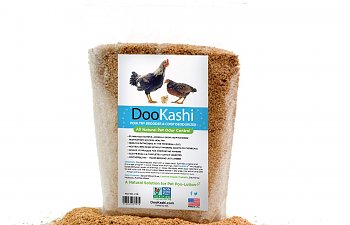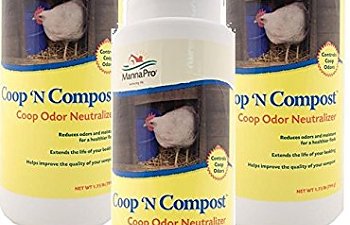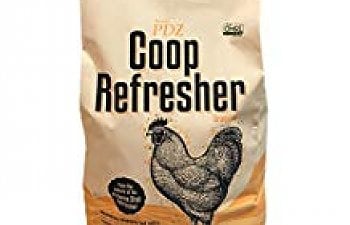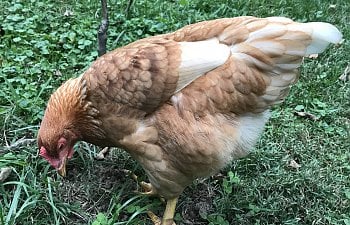Ammonia is naturally produced in poultry droppings and has a very pungent smell. Besides the challenge of a smelly coop, did you know that ammonia levels could build up in your coop without proper ventilation especially during the winter months when it is cold outside and everyone wants to close the chickens up inside the coop for warmth? Did you know that ammonia is an invisible, water-soluble, colorless alkaline gas and is listed as a toxic substance by the Agency of Toxic Substances and Disease Registry? Ammonia can also be found in common household or industrial cleaners such as window cleaning products and also some pesticides.
Humans and chickens after repeated or prolonged exposure can develop reduced sensitivity to the odor of ammonia but the harmful effects can still lead to a chronic sinusitis. The ammonia odor can be an eye, mucous membrane, and respiratory irritant. As we prepare our coops it is important to think about types of bedding, frequency of manure removal, humidity level, surface area of stored manure, ventilation, manure handling, number of chickens, and the pH of the manure.
Ammonia toxicity is noted by an inflammatory eye condition usually bilaterally in chickens, caused by exposure to prolonged or high amounts of ammonia fumes. It has been found that ammonia concentrations above 25 ppm are toxic to chickens and some have concern for toxicity or irritation at 10 ppm. The ammonia concentration (AMC) is higher in the morning and at night when the wind is not blowing and the heat index is extreme. Typically temperatures above 25°C (77° F) and humidity > 80% increase AMC levels. The main presenting symptom is conjunctivitis an inflammation of the cornea and conjunctiva of the eye. Younger chickens are of course more susceptible than adult chickens and this is more frequently seen in the winter time due to increased time spent inside, with reduced ventilation, and accumulated manure. Many anticipate evaporative moisture losses assist in removal of moisture from litter but evaporation rates may be inadequate to remove quantity of water added to litter on daily basis from manure and drink spillage, which compounds the problem. If pH is 7 or greater this also will allow for conversion of ammonium to ammonia so reducing pH of litter to less than 7 becomes important.
Cases of Ammonia Toxicity reported in flocks
Courtesy of Poultry DVM http://www.poultrydvm.com/condition/ammonia-burn
Clinical Signs
Crusty eyes
Swollen eyelids
Rubbing heads against wings
Gray-cloudy looking cornea
Reddened eyes
Sensitive to Light
Blindness
Diagnosis
History
Clinical signs
Eye exam
Treatment
- Improve Management Practices
Clean and change coop litter more often; consider switching to a different type of material. Peat works best for reduction of ammonia levels. - Supportive Care
Isolate the bird from the flock and place in a safe, comfortable, warm location (e.g. chicken hospital or covered crate) with access to water and food. Limit stress. Call your veterinarian. - Topical Antibiotics
Build up of droppings in an enclosed area
Poor ventilation
Increased Moisture
Increased time indoors, particularly the winter
Prevention
- Add 100 g/kg of natural zeolites (clinoptilolite) to the bedding litter, to reduce moisture, ammonia levels, and pH
- Ensure proper ventilation and provide dry, clean bedding that is frequently changed
- Do not overcrowd birds
Depends on timeliness of diagnosis and treatment.
Product Resources

DooKashi Coop Odor Eliminator:
https://www.amazon.com/gp/product/B010TXIY1Y/ref=as_li_qf_asin_il_tl? ie=UTF8&tag=dvmsites20&creative=9325&linkCode=as2&creativeASIN=B010TXIY1Y&linkId=f8c28bb7d46951c0cd3d5d44792c1596

Manna Pro Coop Odor Eliminator:
https://www.amazon.com/Pack-Manna-P...=8-2-fkmr0&keywords=manna+pro+odor+eliminator

Sweet PDZ Coop Refresher:
https://www.amazon.com/Sweet-PDZ-Co...UTF8&qid=1540478893&sr=8-1&keywords=Sweet+PDZ
References
Agency for toxic substance and disease registry. (2011). Ammonia. Retrieved from
https://www.atsdr.cdc.gov/substances/toxsubstance.asp? toxid=2
Arteaga, V., Mitchell, D., Armitage, T., Tancredi, D., Schenker, M., & Mitloehner, F.
(2015). Cage versus noncage laying-hen housings: Respiratory exposures.
Journal of Agromedicine, 20(3), 245-255.
David, B., Mejdell, C., Michel, V., Lund, V., Moe, R.O. (2015). Air Quality in
alternative housing systems may have an impact on laying hen welfare. Part II-
Ammonia. Animals (Basel), 5(3), 886-96.
Dunlop, M.W., Blackall, P.J., & Stuetz, R.M. (2015). Water addition, evaporation and
water holding capacity of poultry litter. Science of the Total Environment, 538,
979-85.
Gutiérrez-Zapata, D.M., Galeano-Vasco, L.F., Cerón-Muñoz, M.F. (2016).
Semiparametric modeling of daily ammonia levels in naturally ventilated caged-
egg facilities. PloS One, 11(1): e0147135.
Poultry DVM. (2018). Ammonia toxicity. Retrieved from
http://www.poultrydvm.com/condition/ammonia-burn
Schneider, A.F., Almeida, D.S., Yuri, F.M., Zimmermann, O.F., Gerber, M.W., &
Gewehr, C.E. (2016). Natural zeolites in diet or litter of broilers. British Poultry
Science, 57(2), 257-263.
Shah, S., Westerman, P., & Parson, J. (2012). Air quality; Poultry litter amendments.
Air Quality Education in Animal Agriculture. The USDA National Institute of Food
and Agriculture. Retrieved from https://articles.extension.org/sites/default/files
/Litter Amendments FINAL.pdf
U.S. National Library of Medicine. (2014). Ammonia. Tox Town. Retrieved from
https://toxtown.nlm.nih.gov/chemicals-and-contaminants/ammoni

